| Film review: The Scorch Trials |
 |
 |
|
Written by Ivan Radford |
| Friday, 11 September 2015 11:00 |
|
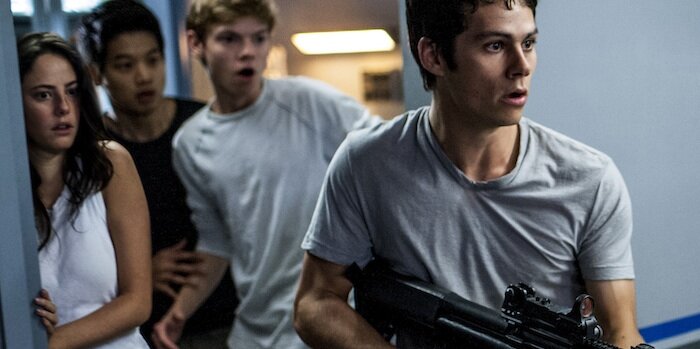
Director: Wes Ball
Cast: Dylan O'Brien, Kaya Scodelario, Thomas Brodie-Sangster, Giancarlo Esposito, Aidan Gillen, Barry Pepper, Lili Taylor, Ki Hong Lee, Patricia Clarkson
Certificate: 12A
The Scorch Trials manages the impressive feat of containing more running than The Maze Runner, a film that was mostly about people running. The problem is that after escaping their labyrinthine prison at the end of the first film, our defiant teens need something else to run from. They take their lead from Marlon Brando's similarly rebellious Wild One: Whaddaya got?
At first, the answer seems to be a vaguely suspicious shelter for teens immune to the virus wiping out humanity. It's run by creepy-man-of-the-moment Aidan Gillen, whose job title is unclear, but mostly seems to involve curling the corner of his mouth every time someone gets hurt. You don't need to hear the words "paradise", "lucky chosen ones" and "never seen again" to guess things aren't all they seem.
When outside of the compound, though, that reason changes to the zombies now populating the planet - freaky, dull-eyed, black-veined creatures that don't waste time shuffling around like the Romero monsters of yesteryear. Or is it the humans trying to survive in this burned-out society, the kind of scavengers desperate enough to fire a gun, chain someone from the ceiling or sell out their friends? Perhaps it's the sinister organisation WCKD, which wants to harvest the kids for their cure-carrying blood?
Our teens spend the whole film rushing between this endless string of threats, stopping only to look shocked, surprised or remind each other to keep running. Dylan O'Brien remains likeable as leader Thomas, but is reduced to jogging to the end of the frame and staring, open-mouthed, into the distance at the next oncoming peril. The rest of the gang, meanwhile, rely on their actors' natural charm (Thomas Brodie-Sangster remains a talent to watch) to get through the script: the majority of the dialogue consists of the words "Quick!", "Run!", "You're almost there!" or a combination of the three.
Wes Ball directs it all, at least, with an impressive urgency; after tackling sci-fi with his first outing, he leaps into horror with the same energy and strong sense of world-building. The abandoned skyscrapers and eerie corpses are all brilliantly, creepily brought to life - although, despite being edited for a 12A certificate, this is really not suitable for those under 15. The newest members of the cast, meanwhile, are obviously having fun: Breaking Bad's Giancarlo Esposito is enjoys himself as, essentially, a desert pirate, while Lili Taylor tries to bring gravitas to the film's science as a former member of WCKD - you can tell a company is bad when their name is one letter away from a lucrative sponsorship deal with an alcoholic beverage. The excellent Kaya Scodelario, meanwhile, out-acts them all as Teresa, who becomes increasingly conflicted over the whole situation.
But the threads holding the plot together are woefully thin: Rosa Salazar is wasted as a token romantic interest, who is introduced just for the sake of having a love triangle, while Alan Tudyk's role as a sleazy bar owner could have come from a completely different film - another person inserted solely to extend the runtime. There's much to be said for a film aimed at younger audiences daring to tackle the same moral dilemmas as Channel 4's brilliantly dark series, Utopia - the use of the divided ensemble to foreground the debate of the kids' lives vs the future of the world is effective - but writer TS Nowlin is so busy being ambitious, he forgets to be entertaining. This is a big step down from The Maze Runner's taut, gripping structure: the maze, not the running, was the secret to that film's success. Here, our heroes even flee from the weather in a scene that brings to mind Mark Wahlberg trying to outrun the wind in M. Night Shyamalan's The Happening. Without the confines of the franchise's maze walls, this sequel dashes all over the place - but it feels slower than ever.
|
| Film review: Legend |
 |
 |
|
Written by Ivan Radford |
| Friday, 11 September 2015 09:36 |
|

Director: Brian Helgeland
Cast: Tom Hardy, Tom Hardy, Emily Browning
Certificate: 18
What's the only thing better than Tom Hardy? Two Tom Hardys. It's hard to argue with the logic behind Legend, which sees the actor take on the dual role of Reggie and Ronnie Kray - and sure enough, he knocks it out of the park.
Hardy swaggers about the place as Reggie, as cool and suave as his suits. Then, thanks to some CGI trickery, he stomps into frame as Ronnie, all pout and aggression. It's a neat study of two halves of a whole: one glances sideways; the other stares bluntly at you.
The loud title immediately makes it clear that we're not in for a low-key ride: Brian Helgeland's film is a brash, cartoonish take on the famous gangsters, positioning the brothers as monuments of myth. Hardy's performance - one of the best of his impressive career - fittingly towers over it all. It's sad, then, that the rest of the movie never quite escapes from his shadow.
That problem is evident throughout the production in both big and small details. To match Hardy's larger-than-life presence, Helgeland's camera adopts a similarly glossy attitude. On the one hand, that allows for dark humour, as the graphic violence veers towards Tarantino levels of gore. On the other hand, it means everything has to scream 1960s to be heard over the soundtrack, which packs in obvious tunes like a Spotify playlist your boss has chosen to put on at work.
The result is something so stuffed with period details that it feels a little too faux to fully convince. When it comes to the punch, though, Hardy still sells it: a fight sequence between Reggie and Ronnie, which could be straight out of an Eddie Murphy comedy, is both emotional and dramatic, not to mention physically brutal.
The film tries to balance that nastiness with a lighter touch, packaging up the story as a doomed romance told from the perspective of Reggie's girlfriend, Frances. Emily Browning is good as the melancholic mobster's moll, but she's wasted in the role, which uses her as a conduit for the narrative rather than an actual character - a mismatch that drives the uneven tone. She joins an equally impressive supporting cast, which includes Colin Morgan as her brother, David Thewlis as Reggie's wonderfully weasel-like legal adviser, Leslie, and Paul Bettany as rival criminal Charlie Richardson.
The latter turn occurs during a superbly-judged opening sequence, which quickly slips in exposition and historical atmosphere with a subtle confidence. But this isn't a place for subtlety and there's little room on screen for anything that isn't Hardy; Christopher Eccleston as the cop bent on capturing the Krays is presented with such weight that you wonder why he's only in it for 10 minutes. As things escalate into amusing photos with politicians and graphic turf wars, the script's swings become increasingly wild. Tom's star quality isn't in his performance, but in his ability to smooth over that transition; the unbalanced mood becomes an echo of his own contrasting characters. When he's on screen, it's never less than entertaining. The film itself may not go on to become a legend, but it makes a convincing case that Hardy should.
|
| Film review: The Man from U.N.C.L.E. |
 |
 |
|
Written by Ivan Radford |
| Friday, 14 August 2015 17:00 |
|
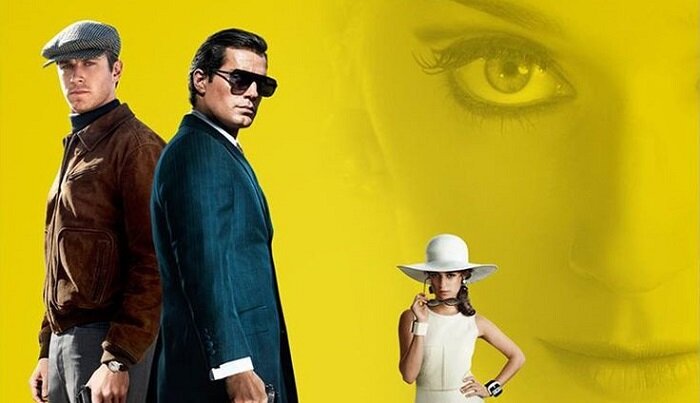
Director: Guy Ritchie
Cast: Henry Cavill, Armie Hammer, Alicia Vikander
Certificate: 15
"Dior should never be mixed with Paco Rabbane," impeccably dressed CIA agent Napoleon Solo (Cavill) insists to his Soviet counterpart, Illya Kuryakin (Hammer), as they attempt to pick out an outfit in The Man from U.N.C.L.E.. Shallow, silly and obsessed with surface appearance, it might be the most important scene in the whole film.
Guy Ritchie's reboot of the 1960s TV series arrives in a year tailor-made for spying: it follows the latest Mission: Impossible film into cinemas and paves the way for the next James Bond film. It can't help but pale in comparison, but The Man from U.N.C.L.E.'s secret is not to try: it's too busy looking in the mirror to bother with the competition.
The premise is taken back to its roots, with the odd couple paired up by American and Soviet intelligence to take down a mutual threat: Italian heiress Victoria Vinciguerra (the wonderfully feline Elizabeth Debicki), who has snared a scientist capable of building a nuclear warhead. But while the concept starts from scratch (complete with back-stories to explain our leads' motivations), Ritchie and Lionel Wigram's screenplay wisely keeps the setting the way it used to be: the 1960s context sets apart this world of simpler thrills from the extravagant explosions of modern espionage, resulting in a smorgasbord of colours and clothes that could have been torn from the pages of a period range catalogue from Marks and Spencer. (Some films come with warnings for their violence or sexual content. The Man from U.N.C.L.E. should come with a warning for your credit card bill.)
Cavill, whose charisma did not always shine through in Warner Bros' earnest take on Superman, slides into the role of Solo with an effortless twinkle, smirking his way through innuendos, car chases and hotel receptionists' underwear. Hammer has all the clout of two identical actors as Napoleon's polar opposite, clenching his fists and growling at anything that so much as resembles happiness. And yet, despite their entertaining (and inevitable) bromance, it is Alicia Vikander who walks away with the show as Gaby, the missing scientist's daughter. The script makes her good at fixing cars in an attempt to give her depth, but she brings all the substance herself, emerging as an equal to the two deceitful, distrusting males - after Testament of Youth and Ex Machina, Alicia has now completed a trilogy of films where she has whipped the movie's rug from under the feet of the men around her.
While the ensemble are acting up every line of dialogue, Ritchie's camera doesn't overdo it, playfully lingering in a truck with a bottle of wine while a set piece (that would no doubt be shot with handhelds by a contemporary) unfolds in the background. Here, his direction feels more confident than ever, presenting a thrillingly underplayed road pursuit in the opening minutes and indulging in some split-screen fun come the climax. Daniel Pemberton's score echoes the elegance and wit, sashaying between Lalo Schifrin and Ennio Morricone to marvellous effect. Add in against-type cameos from Hugh Grant and Jared Harris and the result is a cool pastiche that isn't ashamed to simply have fun. Sometimes, it's not just about how well you do something: it's about how good you look while doing it.
|
| 5 thoughts on Mission: Impossible - Rogue Nation |
 |
 |
|
Written by Ivan Radford |
| Monday, 03 August 2015 05:52 |
|
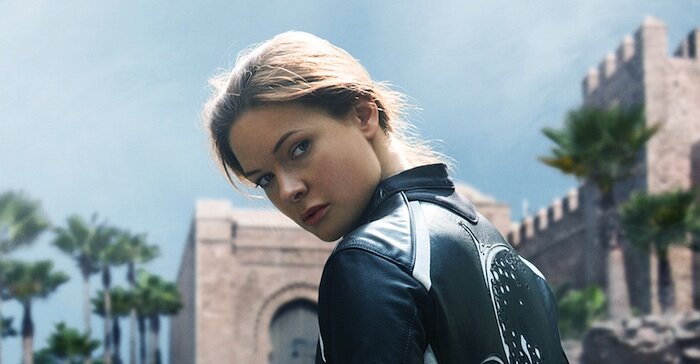
I caught Mission: Impossible - Rogue Nation last week and, while a full review will appear in another publication at a later date, here are five initial thoughts about the enjoyable fifth entry in this almost 20-year-old franchise.
1. Christopher McQuarrie
Mission: Impossible's strength as a franchise is that it's not about Tom Cruise. It's actually about its directors. Every film has been a showcase for a different action auteur, from Brian De Palma (dutch tilt and deception) and Brad Bird (live-action cartoon) to JJ Abrams (blue filter, meta-script) and John Woo (slow-motion doves). They all bring their own style, which is partly why the series' cycle of one-upmanship delivers such entertaining results: the world impossible means different things to different people.
What does Christopher McQuarrie bring to the table? He's always been a writer (The Usual Suspects) more than a director, so while his visual fingerprints may not be everywhere - Mission: Impossible's director-as-star approach does have its weaknesses - his written signature certainly is. Hitchcock nods drive the largely retro plot, including red phone boxes on London's Great Windmill Street and a riff on The Man Who Knew Too Much in one superb opera-based assassination sequence; the introduction of Simon McBurney and Tom Hollander as British officials recall the labyrinthine intrigue of TV's Spooks (this is the first film since the original to be about espionage); but, most importantly, he conceives a set piece that is genuinely not possible for a human to overcome - a fact that gives this film's ludicrous action a surprisingly grounded sense of peril. This is also the first time since the original film that Cruise's super-agent Ethan Hunt (described as "the living manifestation of destiny" by Alec Baldwin's CIA boss) hasn't managed to achieve the impossible.
2. Joe Kraemer
The other key figure in any Mission: Impossible film is the composer. Or, to be more precise, Lalo Schifrin, whose signature theme from the original TV series has an almost Pavlovian effect upon people. Audiences hear it and they perch on the edge of their seat. Tom Cruise hears it and he starts dangling off the nearest skyscraper. After Danny Elfman's symphonic arrangement (Mission: Impossible) and Hans Zimmer's loud, unsubtle treatment (M:I-II), Michael Giacchino made M:I his own with two fantastic soundtracks that played with the theme in every way imaginable. It's to Joe Kraemer's credit, then, that he steps up to bat and knocks it out of the park. Relying more on the Lalo theme than any of the other composers, he restricts his whole orchestration to instruments from Schifrin's ensemble, delivering something that has the sound of Mission: Impossible, as well as the style and energy. (As well as the prolific bongo action, check out the vibraslap on "The Plan", echoing the same rhythm used by Lalo in "Jim on the Move" on the original show's soundtrack.)
3. Simon Pegg
Simon Pegg returns once more to the franchise as Ethan Hunt's phone-a-friend sidekick, Benji. His third appearance since M:I-III, Pegg's presence has been promoted from tech guy/comic relief to best mate/comic relief/active field agent, now getting to co-star in car chases and deliver such key exposition lines as "An anti-IMF?" to the camera. He wears the part well enough - I remember interviewing Pegg for Hot Fuzz years ago and him insisting quite adamantly that he was not "best friends" with Tom Cruise, how times change - but his recurring role, alongside the familiar faces of Jeremy Renner (as William Blandt, sorry "Brandt") and Ving Rhames (as hacker-supreme Luther Stickell) only emphasises the fact that the series has never given a proper second appearance to a female character. Mission: Impossible - Ghost Protocol was so promising because it ended with a team of agents, including Paula Patton's Jane Carter, ready to carry on the torch from Tom Cruise's Ethan Hunt. To see them all sidelined for more of the same male-heavy action, then, is a huge disappointment and a big flaw of the franchise, no matter how likeable Pegg is.
4. Tom Cruise
Tom Cruise may not be the star of the show, but he's a key instrument in its success: in an age of CGI spectacle, Tom embodies the jaw-dropping appeal of practical stunts, allowing himself to be blown up, hung off buildings and - now - strapped to a plane as it takes off, all to bring a new sense of excitement to the table. He's as sprightly now as he was two decades ago, while the occasional cragginess on his face brings a welcome mature edge to his IMF "legend". The problem, though, is that it only encourages the levelling-up of each set piece, which leaves Rogue Nation in the same situation as the previous film: not knowing when to stop, it keeps going and going, adding in too many set pieces. When it works, it rushes from one chase sequence to another - a daisy chain of thrills - but when it doesn't, the whole thing ends up 30 minutes too long. On the plus side, Tom's character has already been developed over the course of the previous films (the absence of any mention of Michelle Monaghan's wife after the fourth film is a shame), which means that more attention can be paid to the other players. That brings us nicely to…
5. Rebecca Ferguson
Forget the director. Forget Tom Cruise. The MVP of Rogue Nation is someone entirely different: Rebecca Ferguson. Who's that? If you haven't seen The White Queen, in which she played Elizabeth, you most likely won't know, but that only makes her turn in Rogue Nation even more effective. This is a star-making turn and she is sublime as Isla Faust, an enigmatic secret agent whose character is that she is an enigmatic secret agent. On the one hand, that means she's the stereotypical elusive female upon whom the largely male cast can project their various ideals. On the other hand, that means the hilariously (read: dreadfully) named Ilsa gets to use that against the largely male cast.
She has a sexual quality - McQuarrie's camera dives in for a butt shot very early on - and wears a stunning yellow dress to the opera, but even as she and Ethan abseil from the Vienna landmark together, there is no forced romantic subplot between them. The nearest she gets to being the movie's love interest is in her relationship with Sean Harris' villain, who is in charge of The Syndicate (the "anti-IMF"), and is susceptible to her feminine wiles. One scene with Simon McBurney's MI5 head, meanwhile, gives her the kind of double-agent depth that could power a whole season of Spooks. The fact that she can kick ass and saves our hero's life (rather than the other way around) without it being a big deal, makes her a fantastic asset to the Mission: Impossible franchise. The fact that she will almost certainly not return in the next sequel, though, only makes you wish for more screen time devoted to her - say, the whole of M:I-6. That, you sense, really would be an impossible mission for the franchise.
|
| Film review: The Legend of Barney Thomson |
 |
 |
|
Written by Ivan Radford |
| Sunday, 26 July 2015 09:04 |
|
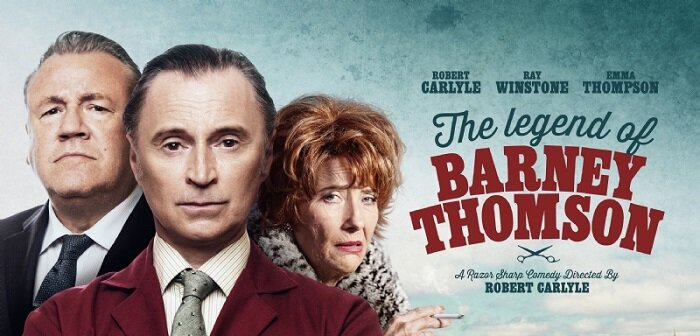
Director: Robert Carlyle
Cast: Robert Carlyle, Emma Thompson, Ray Winstone, Ashley Jensen
Certificate: 15
Robert Carlyle makes his directorial debut with The Legend of Barney Thomson, a title that fits the movie like batter deep-fried around a Mars Bar. The words "legend" and "Barney Thomson" couldn't seem more at odds with each other: outlandish and epic on the one hand; dour and plain on the other. The film revels in that clash of tone.
Barney (Carlyle) is a miserable sort in a town full of miserable people. You couldn't imagine the barber being a legend of any sort - he can barely even hold a conversation with a customer. That turns out to be a problem for his boss, who wants rid of him so he can hire someone with friendlier banter. A swift accidental murder later and Barney's in even worse kinds of trouble. It's not long before (the brilliantly named) Detective Inspector Holdall (Ray Winstone going full Ray Winstone) is sniffing around. The twist? The cop's not even after him for that murder - there's a serial killer on the loose and Holdall reckons Barney's to blame.
Carlyle milks the constant juxtaposition of the mundane and the macabre, the mistakenly homicidal and the moronic, forcing a wedge of dark comedy between the two. The gap is jarring - but intentionally so. From the opening voice over accompanied by shots of dismembered body parts, this is pulp fiction in the messiest sense of the word; you can almost see the lumps of the original novel after it's been chopped, blended and mashed for the screen.
On the one hand, that is The Legend of Barney Thomson's greatest strength. The Glaswegian locations are wonderfully drab and the cast amusingly colourful, always out of step with each other. Holdall may have the wrong suspect, but he can sense something's off about the whole story. Fitting right in with that are some stellar supporting turns, from Tom Courtenay as Holdall's rude boss to Ashley Jensen as his rival, the overly macho DI Robertson. Taking the biscuit, though, is Emma Thompson, who transforms herself as Barney's hilariously repulsive mum - a turn that recalls Mia Farrow in Broadway Danny Rose, if Mia Farrow's character slipped in an ashtray while doing an impression of Vera Duckworth.
Carlyle gives his actors oodles of space to be as awkward as possible, but while the cast benefit, the rest of the production suffers: the script, which is balanced on a knife edge between rib-tickling and nerve-jangling, feels too uneven to be fully either. A surprisingly bloody conclusion to one subplot only emphasises the wildly unbalanced mood. The result is eccentric and odd, in a way that only real life can be. But sometimes, you need a little polish to make your grit easier to digest.
|
| Film review: Song of the Sea |
 |
 |
|
Written by Ivan Radford |
| Thursday, 09 July 2015 17:24 |
|
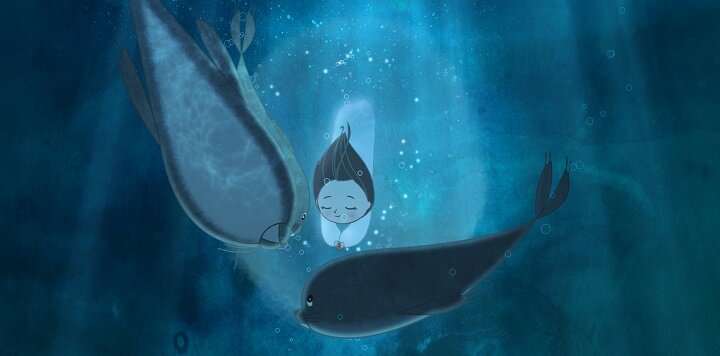
Director: Tomm Moore
Cast: Brendan Gleeson, David Rawle, Lucy O'Connell
Certificate: PG
Hey, kids! Who fancies a story about death? That's the kind of question that would get a children's entertainer fired, but it's also what makes Irish animation studio Cartoon Saloon so special. Unafraid to raise such serious subjects with its young audience, the studio's latest - Song of the Sea - is an astonishing animated gem.
Like all good kids' stories, it involves a lighthouse. That's where Ben (an irrepressible Rawle) lives with his mum and dad, Connor (a heartbreaking, gravelly Gleeson). But when his sister, Saoirse (the charmingly bright O'Connell), is born, he loses his mother - a departure that changes everything. Even at the age of 10 (and Saoirse six), he still it holds against her. His depressed dad, meanwhile, has turned to the drink to get by. So far, so gloomy.
His mother, though, tells him a bedtime story before she slips away: an Irish folk tale about a giant, Mac Lir, who was turned into a stone island by a fiersome owl-witch called Macha. It's a stunning moment of beauty amid the tragedy: a kaleidoscope of colours and cultural history that could have even the grumpiest of adults enchanted and ready for some shut-eye.
That balance between real life and fantasy is central to Song of the Sea's charm. The heartfelt command of magical realism puts Tomm Moore's work comfortably alongside that of Studio Ghibli. Combined with his own studio's signature hand-drawn animation, he's every frame the Irish Hayao Miyazaki. The Peppa Pig-like images are simple, but used in bewitchingly complex ways: people and backdrops layer up like a collage of your favourite picture books; an effect that feels more immersive and multi-dimensional than any 3D blockbuster.
The pace of a gentle page-turner seeps into the tale too: this the kind of lilting narrative that seems designed to slow kids down from their hyperactive existence, encouraging them to take time and absorb the small details.
There is certainly no shortage of them: the screen's concealed depths, which lie in the edges and shadows of each object, are not just visual, but emotional too. As Saoirse is revealed to be a selkie, a mythological seal-like creature, the theme of farewells and family runs right through the core of her and Ben's adventure, which carries them from mundane towns and quiet forests to cavernous lakes and flying animals. Throughout, loyal sheepdog Cú is on standby, a cute sidekick, but also a force that brings the siblings together.
Is what they're experiencing real or make-believe? The parallels between the literal and literary pile up like sheets of sugar paper, but as we dive into impossibly deep waters and hold our breaths for longer than any human could, such concerns float to one side. Instead, there is a childlike wisdom to the story's logic: one set piece, which starts out scary, drifts subtly into cathartic waters, as we discover that Macha turns people to stone by sucking away their emotions. Unlike the unhappy adults around them, these kids realise that embracing the pain and sorrow of grief are part of getting older.
There is a trust implicit in conveying such a message in a kids' film, which goes hand in hand with the gentle speed and blurred reality: like the best children's movies, Song of the Sea has faith in its audience to be mature in everything but imagination.
|
| That awkward moment when Terminator isn't the best looking Arnie film of the summer |
 |
 |
|
Written by Ivan Radford |
| Monday, 22 June 2015 13:39 |
|
Say the name Arnold Schwarzenegger and "summer movie" to someone and they'll most likely assume you're talking about Terminator Genisys. But a new UK poster for Arnie's next film has arrived that blows the promise of killer robots out of the water.
Maggie, which stars Abigail Breslin, is out on 24th July. Just take a look at this bit from its quad:
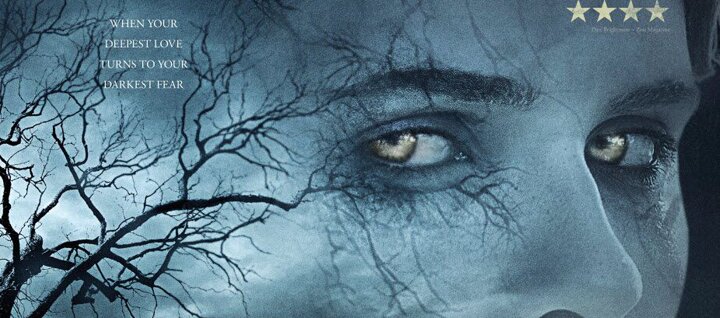
You wouldn't even think it was a film starring the man who once punched a camel in Conan the Barbarian, would you?
Now bask in the beauty of the whole thing:
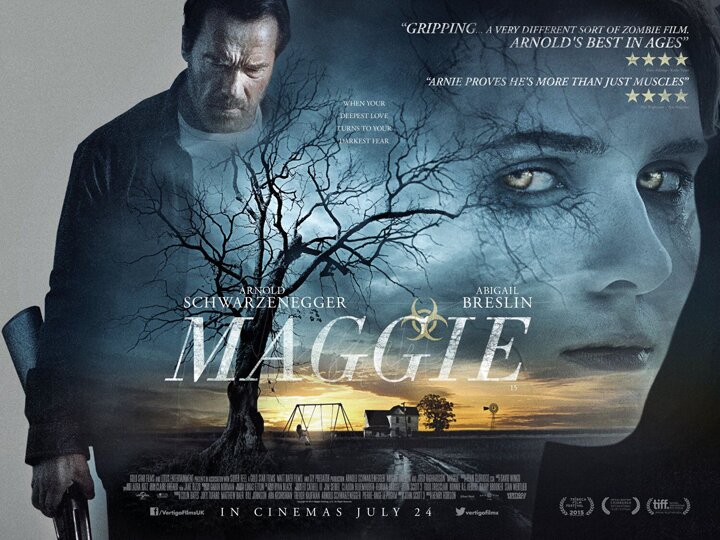
Sorry Genisys. Your whole advertising campaign just got terminated.
|
| Film review: Jurassic World |
 |
 |
|
Written by Ivan Radford |
| Thursday, 11 June 2015 11:17 |
|
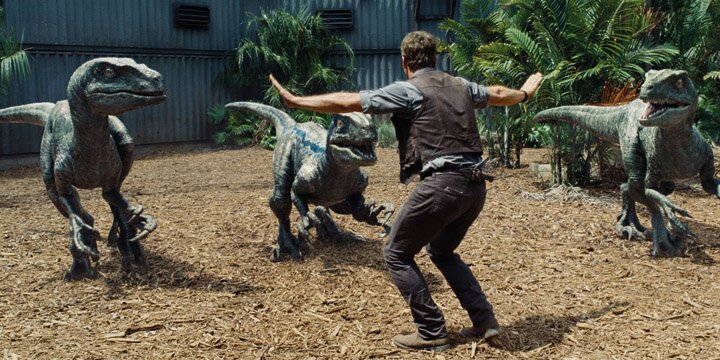
Director: Colin Trevorrow
Cast: Chris Pratt, Bryce Dallas Howard, Ty Simpkins, Nick Robinson
Certificate: 12A
Everything looks different when you're older. Big things seem small. New things seem tired. 22 years on, Jurassic Park, that awesome summer blockbuster, seems more like a project management nightmare. Mankind was so keen to play God that it forgot to consider what might happen. There were no procedures or protocols in place, especially for things going wrong.
What a difference two decades make. John Hammond's dream - renamed Jurassic World to distance itself from the deaths in the 90s - has been realised. The park is open. And there are more than enough protocols to cater for every eventuality. This time, though, that's exactly the problem.
We pick events up as two brothers (Gray and Zach) take a trip to the park, courtesy of their Aunt Clare, who manages it. With her too busy to spend time with them, they are palmed off with VIP wristbands and left to explore under the eye of a useless assistant. It's a smart move from the screenwriters, who take care to abide by Spielberg's Law: monsters are scariest when chasing children.
We've seen this all before, of course, which is Jurassic World's biggest obstacle. The script, though, wittily turns that problem into the film's central theme: while Gray (Simpkins), the youngest, is excited by the ancient beasts on display, Zach (Robinson), the eldest, is bored by them. When the T-Rex inevitably stomps onto the screen, he's no longer the main attraction: he munches a goat in the background, while our teen is more interested in what's on his phone.
And so, just as Jurassic Park was aware of its own cinematic status - InGen's groundbreaking clones representing Hollywood's game-changing CGI, merchandise for sale channelling the commercialism to come - Jurassic World's meta-concept sees its owners trying to recapture the fun of 1993 for the jaded modern public.
"No one’s impressed by dinosaurs anymore," says Claire (Dallas Howard) to a gaggle of corporate guests, each hoping to sponsor the next attraction. And so they genetically engineeer their own creature by splicing together bits from old favourites. If that cocktail of familiar hits proves equally applicable to the whole movie, it fits right in with the post-modern tone: of course, the dinosaur is going to escape; of course, the scientists are the real monsters; of course, there's a rugged hero who represents the opposite of everything the corporation stands for.
That would be Owen (Pratt), whose job is to train velociraptors in the hope of using them as hunting dogs. It's not about control, he tells Claire, with whom he has a token will-they-won't-they romance, but mutual respect. That respect, which was so lacking in Spielberg's first film - where scientists needed no discipline to obtain their knowledge - is even more absent here. Dinosaurs are called "assets", while Vincent D'Onofrio's (two-dimensional) villain, Hoskins, thinks of them as potential weapons rather than animals. BD Wong returning as Dr. Henry Wu only adds to the sense of moral irresponsibility.
Hammond's spirit lives on in the park's wealthy owner, Masrani (a childlike Irrfan Khan), who flies about in his helicopter, talking about how he hopes guests will be humbled by their visit. While it would be so easy for a director to stroll in without such humility, Colin Trevorrow inherits his ancestors' universe with the utmost respect, from cheeky nods (Jake Johnson's loyal nerd, Lowery, wears a Jurassic Park t-shirt) to set pieces that literally follow in the (giant) footsteps of the franchise. Crucially, Trevorrow's bigger, "cooler" monster is withheld for much of the runtime, a predator (in the John McTiernan sense) only captured in glimpses before its full reveal. Others, meanwhile, are disposed off by blase soldiers.
As the park attempts to handle the disaster, there's a growing realisation that its back-up measures and security forces are inadequate. That's because they're based on the same lack of respect as InGen's careless first attempt. Some things, even in 2015, haven't changed.
That balance between trust and fear drives the narrative's tension - a juggling act handled superbly by the charismatic Pratt, who interacts with his raptor counterparts like they're in the room with him. His trademark goofiness may be absent, but Jurassic World also understands that Spielberg's series began life as a horror not a comedy; one sequence inspired by Aliens, using heart monitors rather than blood to depict death, is chillingly effective.
Dallas Howard, meanwhile, enjoys slowly shaking off her cold, businesswoman role, a cliched journey, but one that ties the peril of her nephews with the overall story: as mankind must learns to respect nature, she must remember to respect other people.
And what of the park itself? Jurassic World is lavishly brought to life, from glistening monorails to staff members faced with customer complaints. You'll want to go there immediately. It's a great piece of world-building that re-establishes Islar Nubla as a contained environment within which our critters can run riot - a fact that drives hunter and prey towards each other at a constant pace.
Can all this recreate the thrill of 1993? Of course not. But Jurassic World cleverly acknowledges that, spending its entire runtime knowingly trying to turn us from the cynical Zach back into the wide-eyed Gray of our youth. That effort erupts in an affectionate climax that carries some of the awe of the recent Godzilla movie: a combination of fear and respect for the original classic that makes you forget, if only for a couple of hours, that old things can still seem as amazing as they did 22 years ago.
|
| Film review: San Andreas |
 |
 |
|
Written by Ivan Radford |
| Friday, 29 May 2015 12:56 |
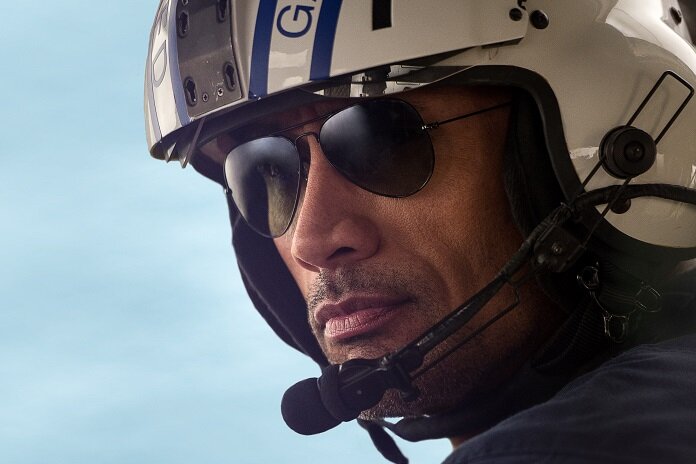
Director: Brad Peyton
Cast: Dwayne Johnson
Certificate: 12A
"That's bad," says a Los Angeles Fire Department worker at the start of San Andreas, after seeing footage of an earthquake at the Hoover Dam. Another expert assesses the damage on-screen, then looks at him. "Yeah."
The movie is downhill from there.
Dwayne "The Rock" Johnson stars as Ray, a helicopter pilot who spends his days rescuing people from danger. He's a professional rescuer. So when it turns out that the entire San Andreas fault is activating, laying waste to the whole of San Francisco, Ray immediately starts rescuing left, right and centre.
He hops into his helicopter to rescue his daughter, Blake (Alexandro Daddario), who is on a trip with his ex-wife's new fella, Daniel (Ioan Gruffudd in full asshole mode). But first, it turns out his ex-wife (Carla Gugino) needs rescuing from a collapsing hotel, so he rescues her. Then he rescues a street full of people from a toppling building. As the estranged pair travel into harm's way, we discover that Ray blames himself for his other, dead daughter, who passed away after Ray - the professional rescuer - was unable to rescue her. Which is why he's so keen to rescue Blake now. Because that's what Ray does. He rescues.
All of this is explained with the subtlety of The Rock stamping on a packet of peanuts. That's not because of his performance - Dwayne Johnson is as likeably charismatic as ever, the kind of star presence who can usually make even the worst movie watchable - but the script. Carlton Cuse, the showrunner of last year's cheesy take on Guillermo del Toro's The Strain, spares no shovel power in beating every point into the audience's skulls. "Do you ever imagine what it would be like if our daughter didn't die?" asks Gugino, as they drive through the countryside, one of the few modes of transport that Ray doesn't crash. (A film about Ray never managing to reach his daughter, due to the sheer number of other people his job requires him to rescue, would be a very different - and, you suspect - a far more affecting watch.)
Even the supporting characters, such as Ioan Gruffudd's architect, aren't spared from the bad dialogue. "I never had children because I was too busy raising these," Daniel muses, showing Blake a glossy catalogue of San Fran penthouses. "It's the strongest building in the city," he adds, just in case she needs somewhere safe to hide during the largest earthquake in recorded history.
The spectacle of the city being levelled is big enough to satisfy disaster movie fans, but even director Brad Peyton's carefully orchestrated carnage is subject to the same urge to top what's been before: one scene involving a boat's propellers moves swiftly from thrilling to ludicrous. By the end, things are so overblown that the human cast are reduced to staring at green screens off-camera and doing their best "shocked" expressions.
The largest rumbles, though, are the film's seismic shifts from one tone to another: one conversation tries to be emotional, only for another to be loud, and another to be flippant. All of them end up laughably bad; the movie is less perched on a precipice of awfulness and more precariously riding the tectonic plates of implausibility and stupidity, as they rub together.
The epicentre of the problem is that old chestnut of self-awareness. Where something like 2012 was knowing enough to be enjoyable, San Andreas' insistence upon taking its string of cliched characters seriously undoes most of the brainless pleasure. (The timing of the film's release, only weeks after the tragedy of Nepal, leaves you longing for the more tasteful, and hugely moving, tsunami drama The Impossible.) Blockbuster entertainment is a perfectly fine goal to aim for, but even with Hugh Johnstone-Burt and Art Parkinson almost providing nudge-and-wink jokes as earnest Brits ("My guide book has everything!" one cries), San Andreas is far from unintentionally silly fun. It's simply rubbish.
As Paul Giamatti's seismologist pops up yet again to stare earnestly at the camera and warn of the destruction set to occur in two minutes' time - at one point, he "hacks" the media, 1998 Godzilla-style, only to be given what appears to be an official broadcast slot - you find yourself sighing and gazing into the two-hour abyss that opens up beneath you. Then, the sobering realisation strikes you with all the force of a 9.4 on the Richter scale: like his dead daughter, this is something not even Ray can rescue.
|
| Film review: The New Girlfriend |
 |
 |
|
Written by Ivan Radford |
| Friday, 22 May 2015 19:05 |
|
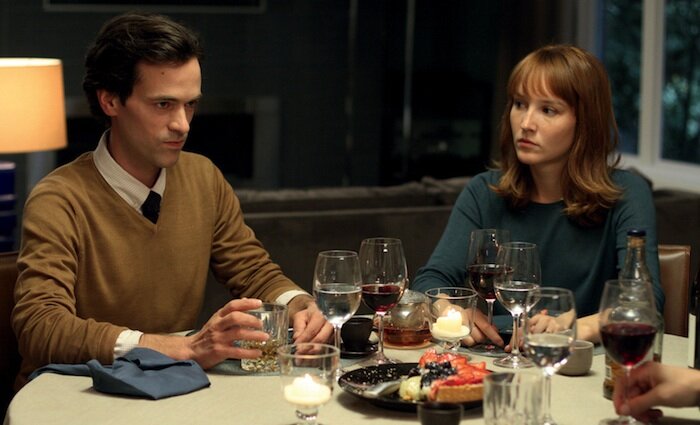
Director: Francois Ozon
Cast: Romain Duris, Anaïs Demoustier
Certificate: 15
Madness. Grief. Identity. Sex. All of them combine to striking effect in The New Girlfriend. The fact it's written by the late Ruth Rendell, then, may come as some surprise - this involving, daring and disarming drama feels a long way from her familiar Inspector Wexford files. But that source material might also help attract older viewers, who are likely to be taken aback by the style and wit on display.
|
| Read more... |
|
|